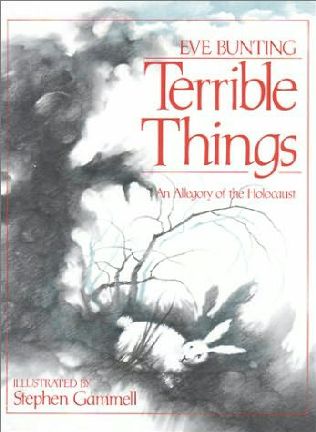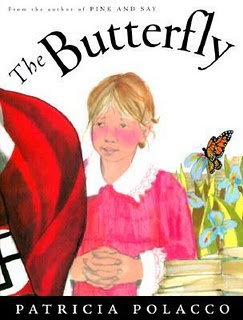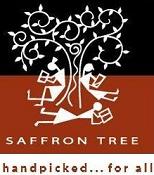Jan 27 – Holocaust Remembrance Day
Author: utbt26 Jan 2011
United States Holocaust Memorial Museum (USHMM) has detailed lesson plans for educators about Holocaust and the reason why children must learn about it. But for me this quote below is reason enough.
“There is only one thing worse than Auschwitz itself….
….and that is if the world forgets there WAS such a place.”
-Henry Appel, Survivor
I strongly believe that young children must not be exposed to meaning less violence like in movies, video games and graphic print media, so why introduce Holocaust to my four year old and six year old?
Well…. media violence is perceived as entertainment. It encourages the child to take a passive role and makes the child indifferent to what is going on. By introducing Holocaust to my children, I am trying to achieve the exact opposite effect – as quoted in USHMM website, ‘ramifications of prejudice, racism, and stereotyping in any society’, highlight the seriousness of the being indifferent and finally, speaking against what is unfair.
Considering the epic nature of Holocaust and the age of the target group, one has to tread carefully to achieve the desired goals.
Poppin’s Mom’s review of Brundibar was god sent! To a preschool child it is the story of Aninku and Pepicek, two poor siblings who are trying to defeat the town bully and get some milk for their ailing mother. While the adult is acutely aware that the town bully is Hitler and finds that every line is loaded with deep meaning, my six year old perceived it as a book about bullying and how one must stand up against bullies. My four year old requested the book to be read multiple times for the sheer pleasure of pronouncing the names Aninku and Pepicek. Over the past four months we borrowed the book from the library many times and after multiple readings and some discussions with my six year old, I felt that it was time to introduce the next book.
Terrible Things: An Allegory Of The Holocaust by Eve Bunting, was next in the natural progression. Eve Bunting seems to be inspired by Pastor Martin Niemoller’s famous quotation, ‘First they came….’, for Terrible Things is a story in first person by a little rabbit about the forest in which he is living with various other animals. Little rabbit is first to see the ‘terrible things’ – vague shadowy shapes with no specifics. Every time the ‘terrible things’ return, they systematically take away and eradicate one species of animals. The other animals are quite indifferent to what is happening to their friends and one day find themselves being taken away by the terrible things.
Having read this book, I must say that the way the book is presented – the animals as characters, beautiful pencil illustrations, vagueness of the terrible things which creates the desired amount of terror, is awesome. Eve Bunting effectively addresses how hatred without any basis when combined with indifference can lead to monumental catastrophe. In our house it set the stage for many discussions with my six year old.
I am guessing that we will be content discussing and reading Terrible Things for few more years to come. But the next book I will introduce will be The Butterfly by Patricia Polacco.
The Butterfly by Polacco touched me because it is the personal story of the author’s aunt and grand aunt. Polacco’s aunt Monique is a young child living in Nazi occupied part of France during WWII. One day purely by accident Moniqure finds out that a jewish family is living in the basement of her house and that her mother is part of the underground movement that helps jewish people hide and move out to safety. Monique becomes friends with the little jewish girl Servine, living in her basement. Because Servine spends her day cooped up in the dark basement, Monique finds things from the outside that cheers up Servine. This is how for the girls and to the readers, a butterfly comes to signify freedom from oppression. One night the girls are playing in Monique’s bedroom and are spotted by Monique’s neighbor. Lives are in jeopardy and they have to act quickly to get Servine and her family far away from Nazi soldiers. We later find out that only Servine made it to safety. Polacco is very effective when she talks about how the little girls going to school are terrorized by Nazi soldiers marching on the road but have put up a merry facade in order to not attract any undue attention. Extremely touching book that I will read with my children when they are 7+, because I want the story to sink in proper.
New York Times in its controversial(and hastily concluded in my opinion) article about picture books, raises the question if we as a society are moving away from picture books. All I can say, from my personal experience is that picture books are not just for young children. The print + picture media must be an option while introducing any new subject, irrespective of the target audience. While broaching new and intense subjects like the Holocaust, picture books provide the desired impact without overwhelming the reader. Another excellent example is Morpurgo’s Mozart Question, reviewed by Choxbox, a picture book for all ages. Choxbox says, “the backdrop of the story is, like many of Morpurgo’s books, the Second World War. Though technically it is for a child between ages 8-12, even older folks will enjoy it”
Stay tuned to SaffronTree for more book recommendations.





 (No Ratings Yet)
(No Ratings Yet)
2 Responses for "Jan 27 – Holocaust Remembrance Day"
No words!! But looking forward to read terrible things tonight!
UTBT SAYS: And you did 🙂
Like how you are progressively taking your girls through it. They are blessed to have a mom like you.
Mine read Hitler’s Canary just before she turned 7, I think that was her first introduction to the Holocaust etc. In my defence it was something she picked and read in her school library, left to me I would never have taken it for her at that age. She took it well though and read it over several times.
There are many many Morpurgos around WW2 and the Holocaust she has read since. Maybe you could check those once your girls are older/ready for them.
UTBT SAYS: That that parent, that that child and what ever works Choxie.
Leave a reply